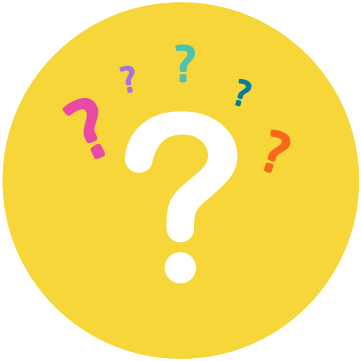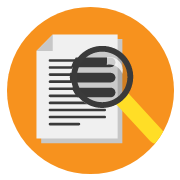Evaluate information
Evaluating information involves critically analysing the content, methodology, resources, and context to determine if it is credible, reliable and relevant.
To do this effectively, you need to:

Sift through misleading information or roadblocks

Identify credible sources of information

Use tools to evaluate information for accuracy and reliability
Why do I need to evaluate information?
Developing the ability to evaluate information is a crucial skill for both study and everyday life. The sources you use in assessments, study, and work should be based on evidence and facts, not just opinions or assumptions.
Misleading information
The internet makes it easy for people all over the world to find information in just a few keystrokes. This also makes it easy to spread false or misleading information. Mis-, Dis- and Mal-information can lead to disastrous consequences for individuals and society. It can “pollute” our information environment at many levels: politically, economically, commercially, or simply personally.
Click on the flip cards below to learn more:
For further information on the potential consequences of misinformation and how you can take steps to counter it, check out our Misinformation guide.
Misleading information and AI
It's important to remember that AI tools such as, OpenAI ChatGPT and Google Gemini, create content based on patterns they’ve learned and not through actual understanding.
This tools can give you information that can be inaccurate, nonsensical, biased or superficial. At times genAI tools can hallucinate responses. That's why it's always a good idea to check their responses carefully, especially when the answers are important.
For more information check out our GenAI limitations module.
Credible sources of information
Studying at university requires you to be able to find, evaluate and use information from credible sources. Credible sources of information provide clear evidence to support their findings, often through references or data. Academic sources, such as peer-reviewed journal articles, are reviewed by experts in the field, ensuring they are credible, rigorous, and up-to-date.
Information sources are generally classified as primary or secondary. Primary sources include original research, interviews, or raw data, while secondary sources interpret or analyse primary data. For more information on the key differences between primary and secondary sources check out the primary and secondary sources guide.
Finding credible sources of information
Navigating the vast amount of online information can be overwhelming. Here are some effective ways for finding credible sources of information. Start by:
Checking your unit Reading List for prescribed materials.
Exploring the Library by using Library Search to access books, electronic articles, DVDs, and more.
Checking out Academic Search Complete as they provide academic content.
Using search engines like Google Scholar or Google, but be mindful that these tools may not always offer the most credible resources compared to the Library.
Alert
Any source of information you use in your assessment needs to be acknowledged and referenced. Referencing the work of others helps you avoid plagiarism and demonstrate academic integrity. It also directs others reviewing your work to the sources of information you have used.
The Deakin Referencing Guide provides detailed instructions on how to reference. If you need more help, ask Study Support, your referencing experts at Deakin.
Tools to evaluate information
To help you evaluate sources of information you find for your assessments and research, we have created and curated the following evaluation tools.
Dependability Checklist
The Dependability Checklist can help you make decisions about the dependability, credibility and trustworthiness of the sources you are considering using in your assessments.
The checklist contains ten questions to get you thinking critically about the resource in front of you. Each question asks for your YES or NO response about a particular feature of your resource. More YES answers result in a higher dependability score.
Once you have developed the skills, you won’t need to rely on the checklist. But remember evaluation is a critical thinking skill, not a formula! You may have a good reason to keep a source that has scored lower.
The SIFT method
The SIFT Method is a simple 4-step method to help you evaluate information that you find on the web. This method, based on fact-checking strategies, helps you to quickly make a decision about whether or not a source is worthy of your attention.
Click on the plus (+) icons below to learn more about the steps in the SIFT method:
Further resources
- CRAAP Test : Use the CRAAP test to review the Currency, Relevance, Authority, Accuracy and Purpose of a resource.
- How To Spot Fake News: This infographic has 8 strategies to identify and evaluate misinformation.
- Fake News: NPR produced a series of stories with 5 effective tips for dealing with misinformation.